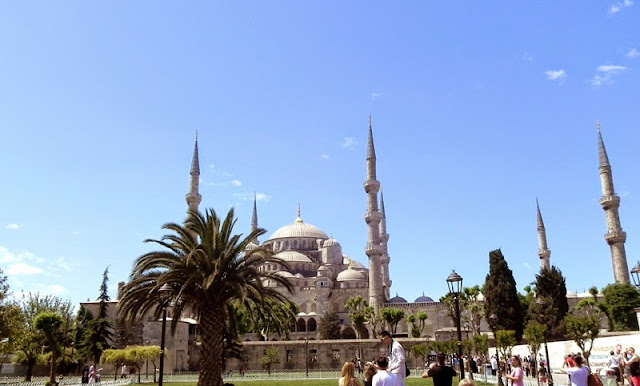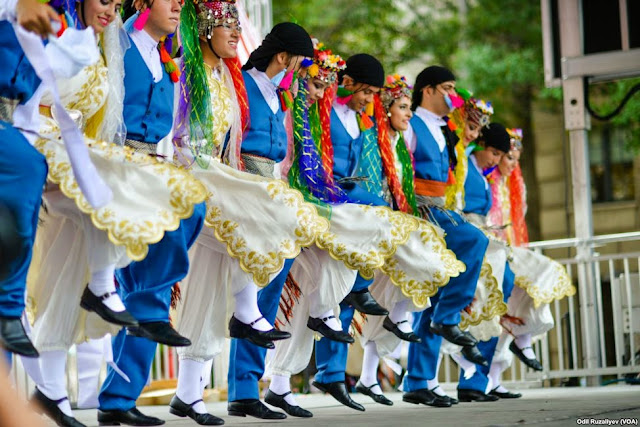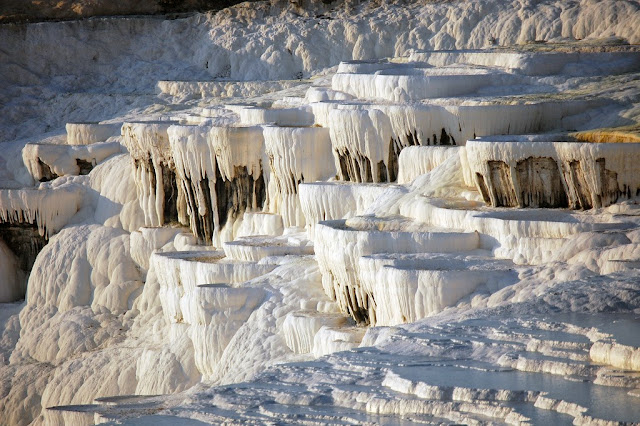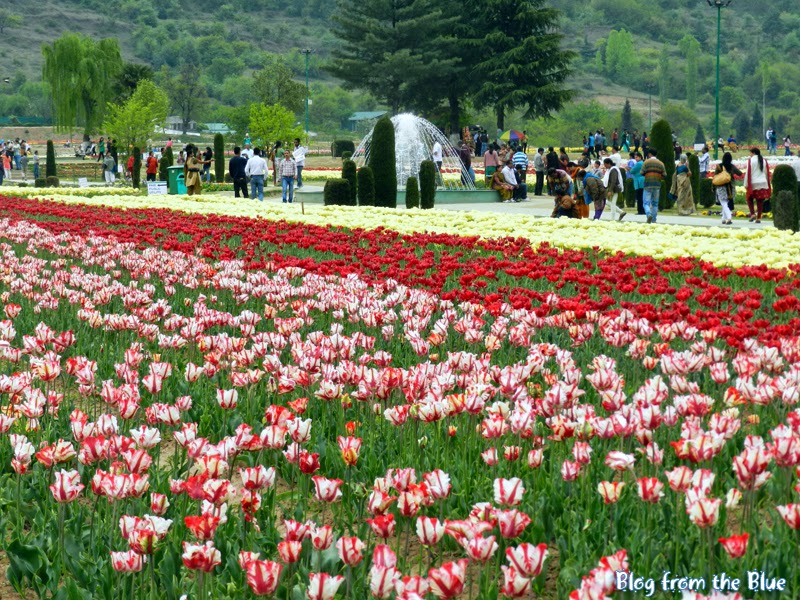An exclusive guest post by:Holidaylettings – TripAdvisor
So weird, so vivid, so Photoshopped? Some landscapes are just so dramatically shaped and coloured that you can’t believe they’re real. Holiday Lettings travels round the world’s most rainbow-bright places, from strawberry lakes to yellow tulip roads.
Zhangye Danxia Landform Geological Park, China
OK, it took some time to convince us that that this layer cake wasn’t an impressionistic painter’s masterpiece. It’s actually 6 million years’ worth of compressed rock and minerals spanning from colours of deep magenta to maroon and lemon. The impact is even more powerful during sunset when you can admire the shadows and rays of light across the formation. After rainfall, the rocks are like a blazing spectacle of kaleidoscopic colours.
You can hike some of the way around the park, or take a sightseeing car to the four viewing platforms. They’re around 8 km apart and you’ll need to allow about one hour to travel from one point to the other. The second viewing platform is the highest and the panorama is well worth the 666 steps.
Tulips fields, the Netherlands
The Netherlands have blossomed since the first tulip was planted in 1593. Every spring, red, pink, purple and orange flowers completely cover the area outside Amsterdam. The ‘roads’ of yellow blooms reputedly make it look just like a scene from the Wizard of Oz.
The best way to enjoy this landscape must be on an iconic bike ride. Routes through the picturesque fields lead you from the ancient town of Leiden to the gorgeous city of Haarlem. Visit the world-famous Keukenhof Gardens: its 7 million tulips, daffodils and hyacinths fill over 32 hectares and offer you plenty of opportunities to take your own still-life picture.
Namib-NauluftPark, Namibia
No, it’s not an art installation. It’s the Namib-NaukluftPark. The tinted orange hue is due to the morning sun touching a towering dune – it makes a spectacular backdrop for the hulking camel thorn trees.
Do stay overnight in the park if you can. You can venture into the stark and striking desert terrain and walk amongst the tallest sand dunes in the world in the cool of the morning. Later, witness the breathtaking sunset before spending a blissful evening stargazing.
Lake Retba, Senegal
It looks like a strawberry milkshake spill or the aftermath of a fuchsia dye disaster. In fact, the water’s high salt content attracts algae (dunaliella salina), which has a pigment that turns the water red. The lake is a striking contrast with the golden sand dunes and bleached mountains of salt stacked up on the shore.
When you visit the lake, you can cruise the dunes, try salt harvesting or just float effortlessly on its surface. You can also go out on the water in a vibrantly decorated wooden canoe (pirogue) to see other boats bobbing around and quaint settlements on the water’s edge.
Grand Prismatic Spring, Yellowstone National Park
The spring’s multi-hued waters make it the ultimate real-life watercolour with a centre that fades from deep to light blue. Green algae grows along the shallow edge, and a bold strip of yellow deepens to orange around the outside before meeting a rusty red border. As the steam emerges from the water, it turns blue and green. Don’t be tempted to get in though: the spring’s water is too hot to sustain life.
Still fancy a dip of fire and ice? Try a natural hot tub in the Park’s Boiling River. Here a large, hot spring enters the Gardner River, mixing hot and cool waters so that it’s a comfortable temperature to bathe in. Soothe yourself into the warm water and soak up the natural beauty of your surroundings.
Zhangye Danxia Landform Geological Park, China
OK, it took some time to convince us that that this layer cake wasn’t an impressionistic painter’s masterpiece. It’s actually 6 million years’ worth of compressed rock and minerals spanning from colours of deep magenta to maroon and lemon. The impact is even more powerful during sunset when you can admire the shadows and rays of light across the formation. After rainfall, the rocks are like a blazing spectacle of kaleidoscopic colours.
You can hike some of the way around the park, or take a sightseeing car to the four viewing platforms. They’re around 8 km apart and you’ll need to allow about one hour to travel from one point to the other. The second viewing platform is the highest and the panorama is well worth the 666 steps.
Tulips fields, the Netherlands
The Netherlands have blossomed since the first tulip was planted in 1593. Every spring, red, pink, purple and orange flowers completely cover the area outside Amsterdam. The ‘roads’ of yellow blooms reputedly make it look just like a scene from the Wizard of Oz.
The best way to enjoy this landscape must be on an iconic bike ride. Routes through the picturesque fields lead you from the ancient town of Leiden to the gorgeous city of Haarlem. Visit the world-famous Keukenhof Gardens: its 7 million tulips, daffodils and hyacinths fill over 32 hectares and offer you plenty of opportunities to take your own still-life picture.
Namib-NauluftPark, Namibia
No, it’s not an art installation. It’s the Namib-NaukluftPark. The tinted orange hue is due to the morning sun touching a towering dune – it makes a spectacular backdrop for the hulking camel thorn trees.
Do stay overnight in the park if you can. You can venture into the stark and striking desert terrain and walk amongst the tallest sand dunes in the world in the cool of the morning. Later, witness the breathtaking sunset before spending a blissful evening stargazing.
Lake Retba, Senegal
 |
| Photo credit: Jeff Attaway (license) via Flickr.com |
When you visit the lake, you can cruise the dunes, try salt harvesting or just float effortlessly on its surface. You can also go out on the water in a vibrantly decorated wooden canoe (pirogue) to see other boats bobbing around and quaint settlements on the water’s edge.
Grand Prismatic Spring, Yellowstone National Park
 |
Still fancy a dip of fire and ice? Try a natural hot tub in the Park’s Boiling River. Here a large, hot spring enters the Gardner River, mixing hot and cool waters so that it’s a comfortable temperature to bathe in. Soothe yourself into the warm water and soak up the natural beauty of your surroundings.



















































